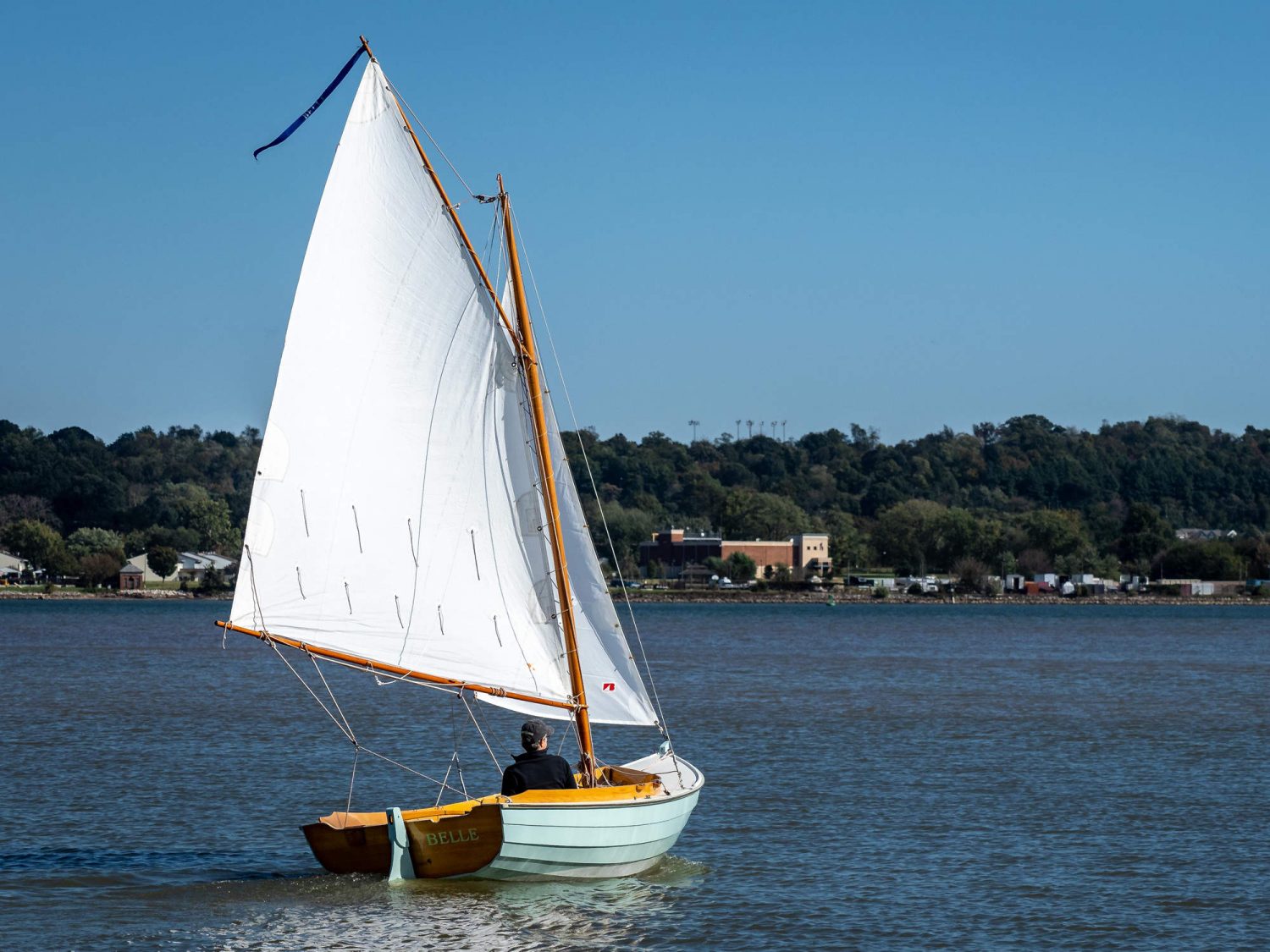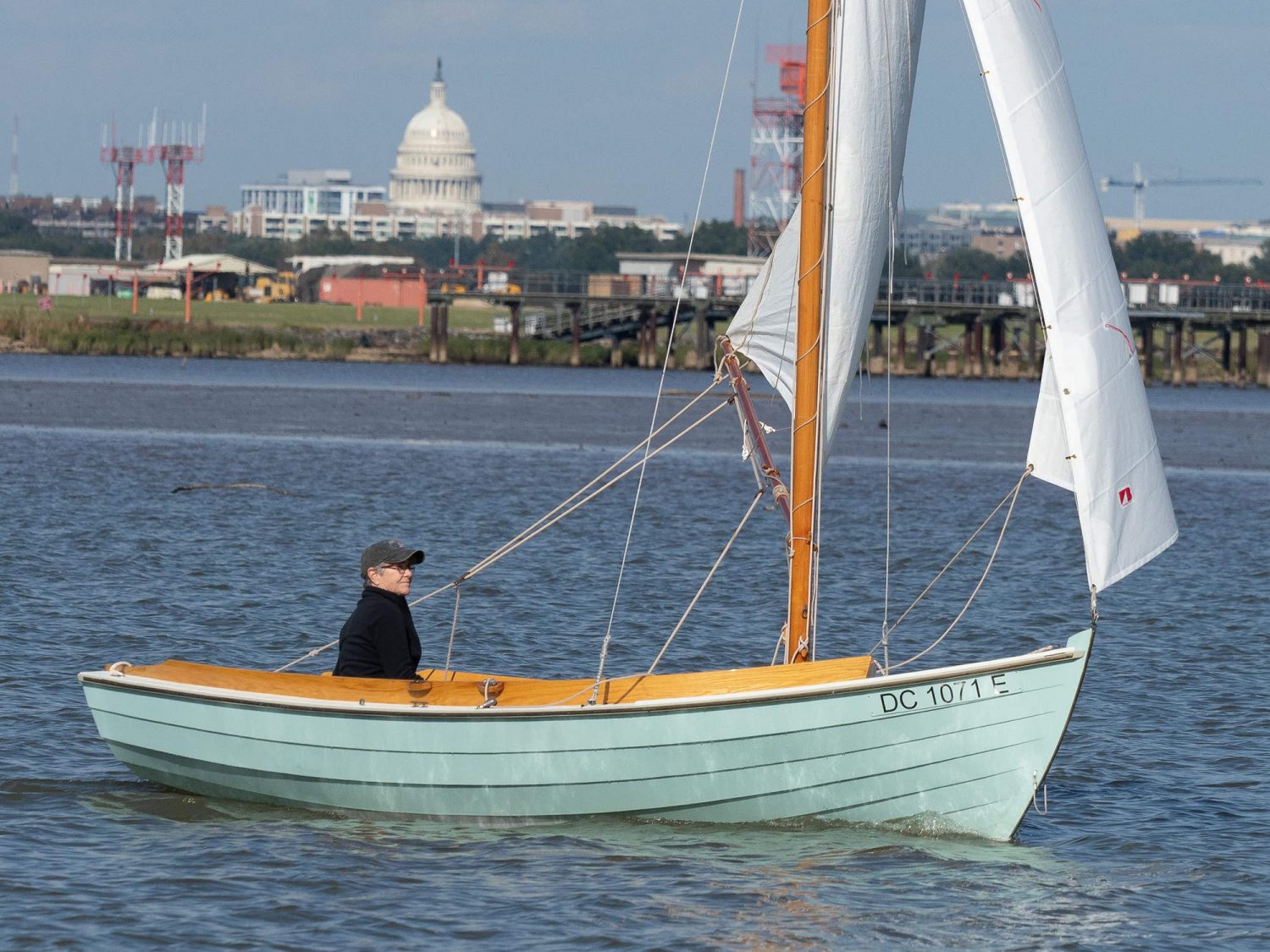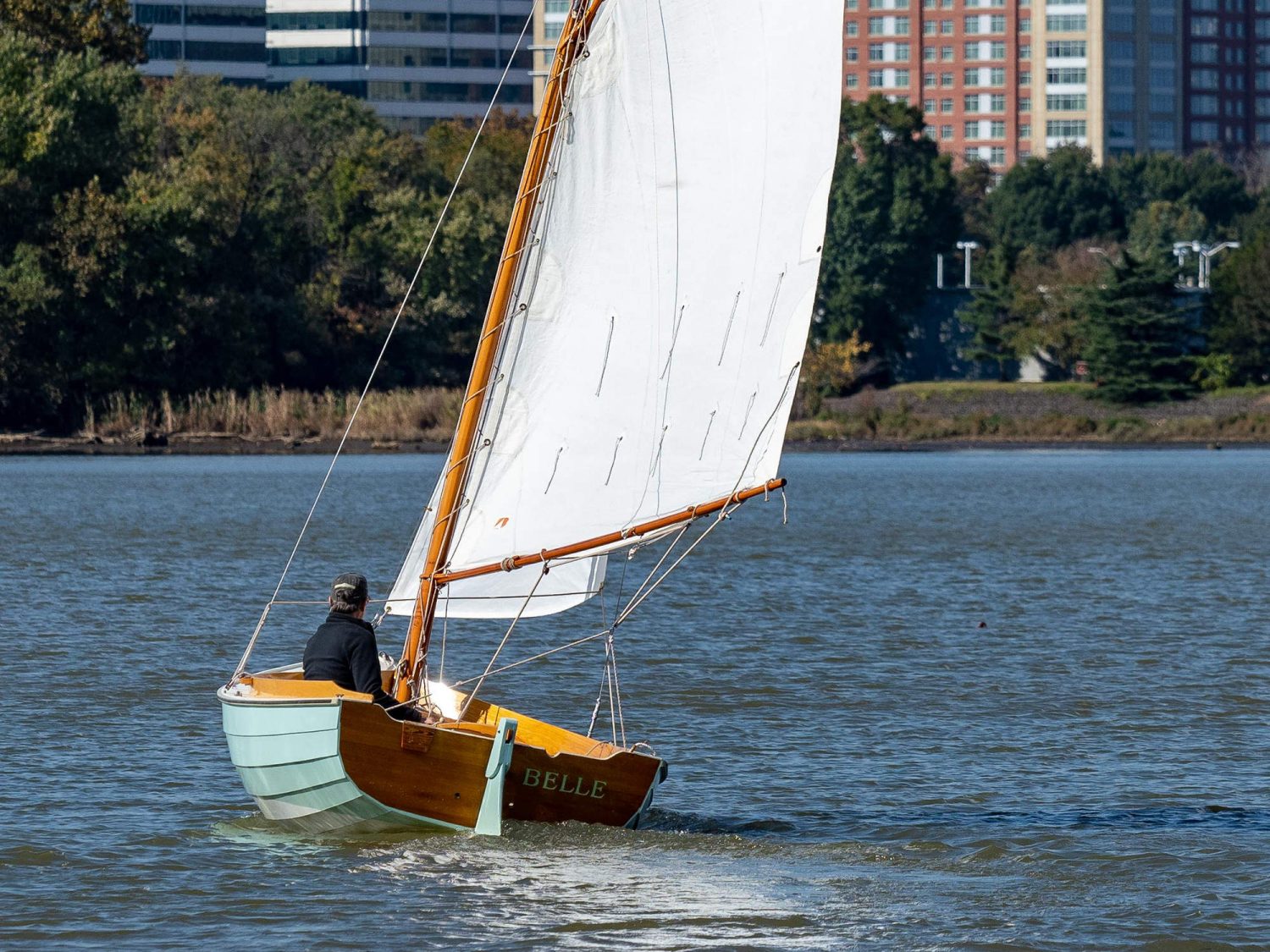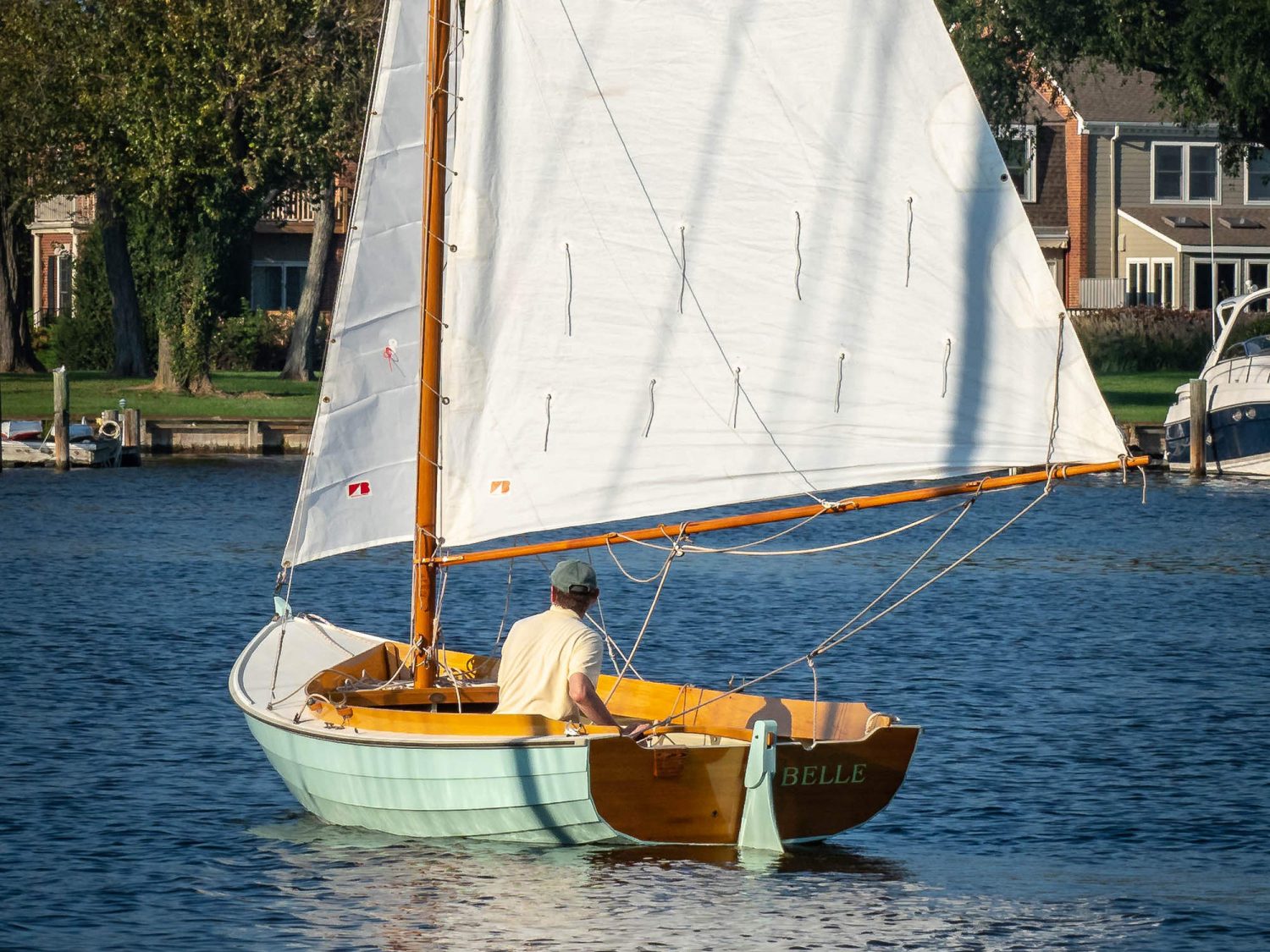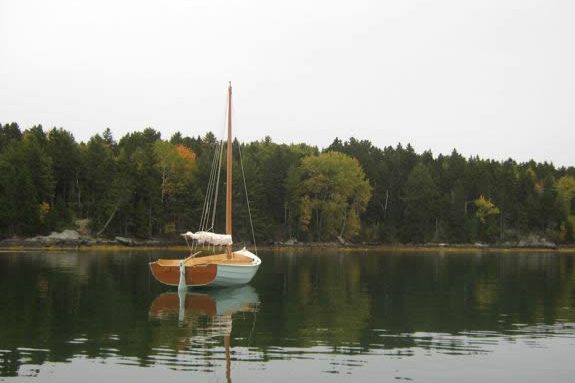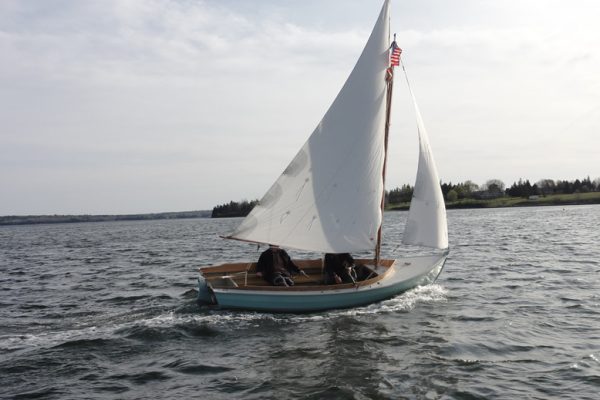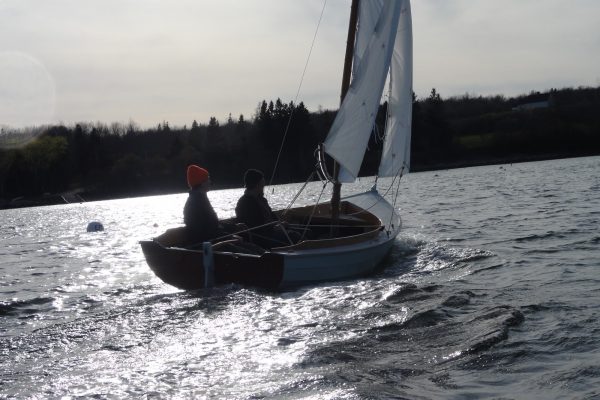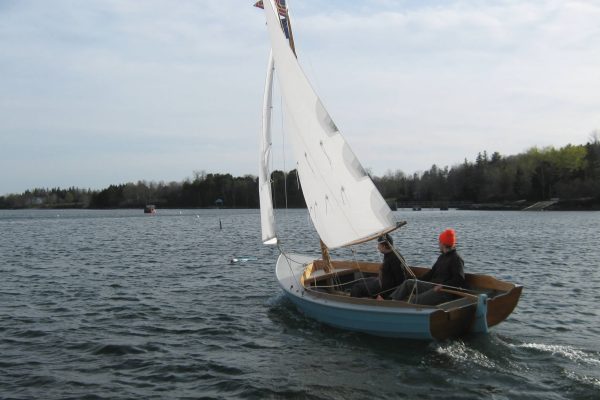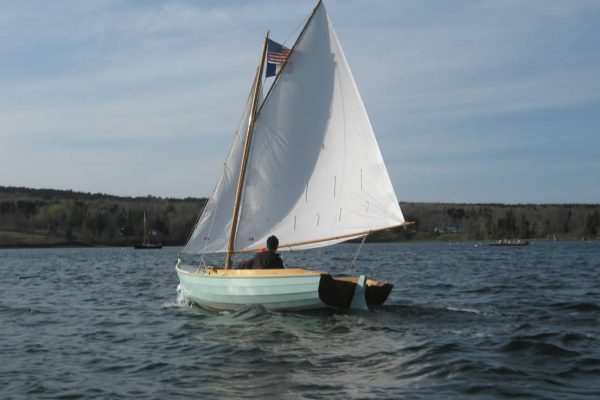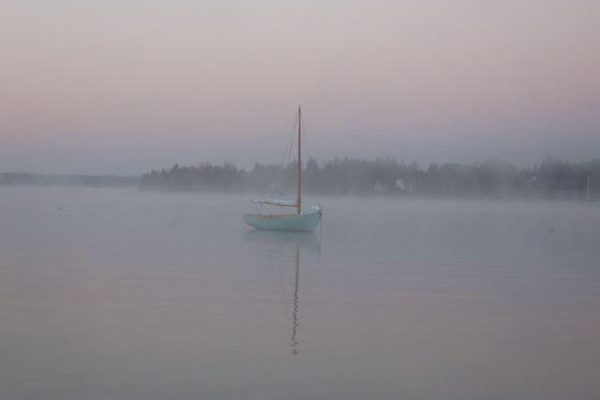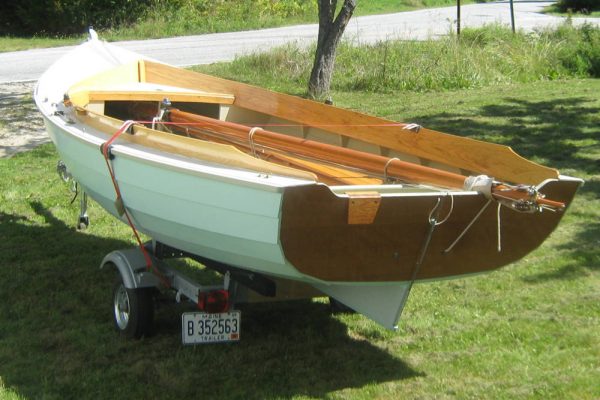LOA: 16’0” Beam: 6’2” Draft: 0’9” Weight: approx 550lb hull weight Ballast: optional 40-50lb inside ballast Sail Area: 126 sq ft Construction: Plywood epoxy lapstrake Rig: Gaff sloop Waters: Protected CE Design Category: TBD Outboard: 2hp gas or electric trolling motor
BELLE reflects my own thoughts on the ideal small daysailer, since she was designed initially for my own use. That said, after launch I was very gratified to receive positive comments and appreciations of the boat. Thus the “Belle” design was born.
All boats are compromises but a good daysailer should, in my book, be not too big and not too small, reasonably fast, and pretty to look at. As a boat builder, I have been involved in just about every type of wood boat construction from plank-on-frame to Phil-Bolger-style plywood boxes. Each has it’s pros and cons, but for BELLE I settled on plywood epoxy lapstrake style as an ideal combination of reasonably light weight, stiffness, and attractiveness.
One of the biggest decisions I faced in designing BELLE was: how big should she be? After sailing many daysailers over the years, I kept coming back to 16ft as perhaps the ideal size for a small daysailer. I don’t mean the 25ft (or longer) “gentleman’s daysailers” but more along the lines of Herreshoff’s famous 12-1/2 and Coquina which are both just 16ft in overall length. Yes, I did want a boat with some of “feel” of these wonderful old daysailers–including the gaff rig and a bit more heft than modern planing dinghies for comfort under sail–but combined with a more modern plywood-epoxy construction and minimal draft for ease of trailering and gunkholing. That is, a boat small enough to trailer behind a 4cyl car but big enough for two or three people (four in a pinch) to daysail in reasonable comfort.
I settled on epoxy lapstrake construction–with epoxy doing most of the work of holding the hull together–for its well-known benefits. Hulls made this way are fairly light and stiff, pretty much bulletproof (I don’t mean that literally!), and to my eye a well-planked lapstrake boat is inherently attractive. The Vikings knew a thing or two when they lapped their planks, since it makes for a lightweight yet strong structure. Somehow I doubt aesthetics came into it, but you never know. Modern epoxies and marine-grade plywoods add their goodness.
No ballast is required for this design, but if you sail solo a lot you might find 40lb or so of lead shot (or somesuch) tucked into the bilge forward might help balance the helmsman’s weight aft. But this is strictly optional and should be investigated after launch, if at all.
That said, this is an unballasted, partially decked boat, and she is best suited to protected or semi-protected waters. There are watertight compartments fore and aft, plus optional flotation bags midships. She shouldn’t sink if she fills with water–there’s no ballast to drag her to the bottom–but it could mean a lot of bailing and possibly a dangerous situation. Reasonable care should be taken in choosing when and where to sail her.
I also designed BELLE with camp-cruising in mind: the cockpit is over 8 feet long and the seats are wide enough for comfortable sleeping….for a 16ft boat! A simple boom tent could be rigged up, and a small porta-potti can store under the foredeck when not in use. Mostly, though, I think I’d run the boat up on a beach–mindful of the tides–and camp ashore. She’ll rest close to horizontal thanks to her shallow draft and wide beam.
BELLE is not based on a particular historical type but, rather, I drew inspiration from many sources:
- The steam-bent coamings are clearly derived from old wonderful classic daysailers. They look great and also work great; the angled backrest is very comfortable.
- I’m also a big admirer of various Atkin sailing skiffs. I like to think there’s a bit of Atkin in BELLE’s sweeping sheerline.
- BELLE’s hull shape has a hint of Cape Cod catboat in her, shallower and a bit beamier than a modern row/sail design without being anywhere near as extreme as a true Cape cat. The extra beam increases her initial stability.
- BELLE’s gaff-sloop rig, simple lift-up rudder, slatted seats and floorboards, and small foredeck with storage underneath are also traditional daysailer elements that work well and look good.
- The type of hull construction–narrow flat bottom and plywood-epoxy lapstrake planks–is based on my experience building Joel White designs such as Nutshell and Pooduck. It’s a wonderful way to build a strong relatively light boat.
Note that all my plans are hand-drawn using battens and pencils and such. To me, hand sketches and plans are the best way I know to design a smaller boat. CAD has it’s place, for sure, but for the boats I’m designing the old-fashioned way seems best.
More about BELLE…
<!–
–>

